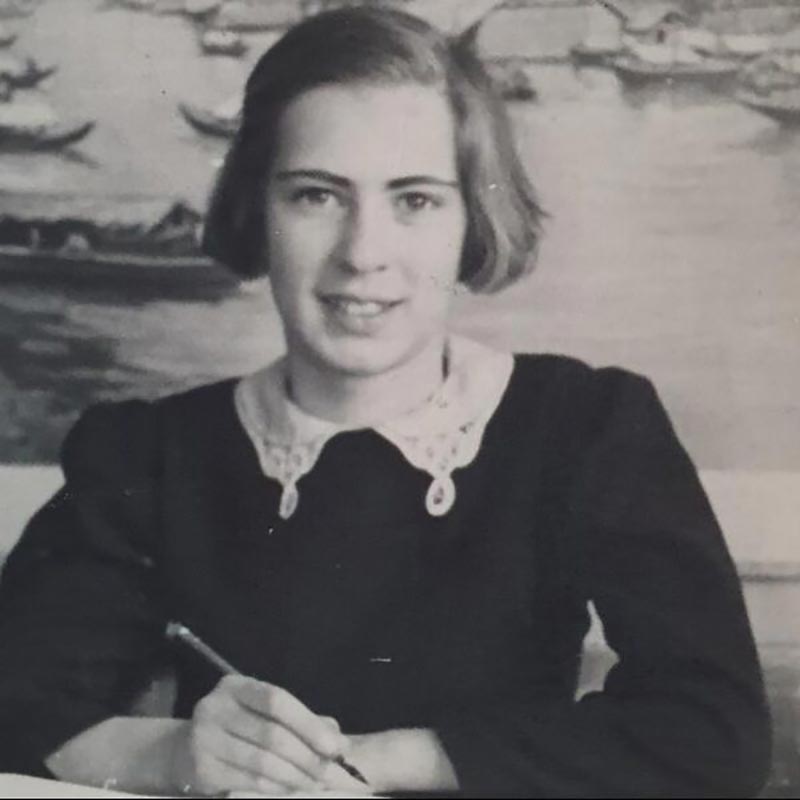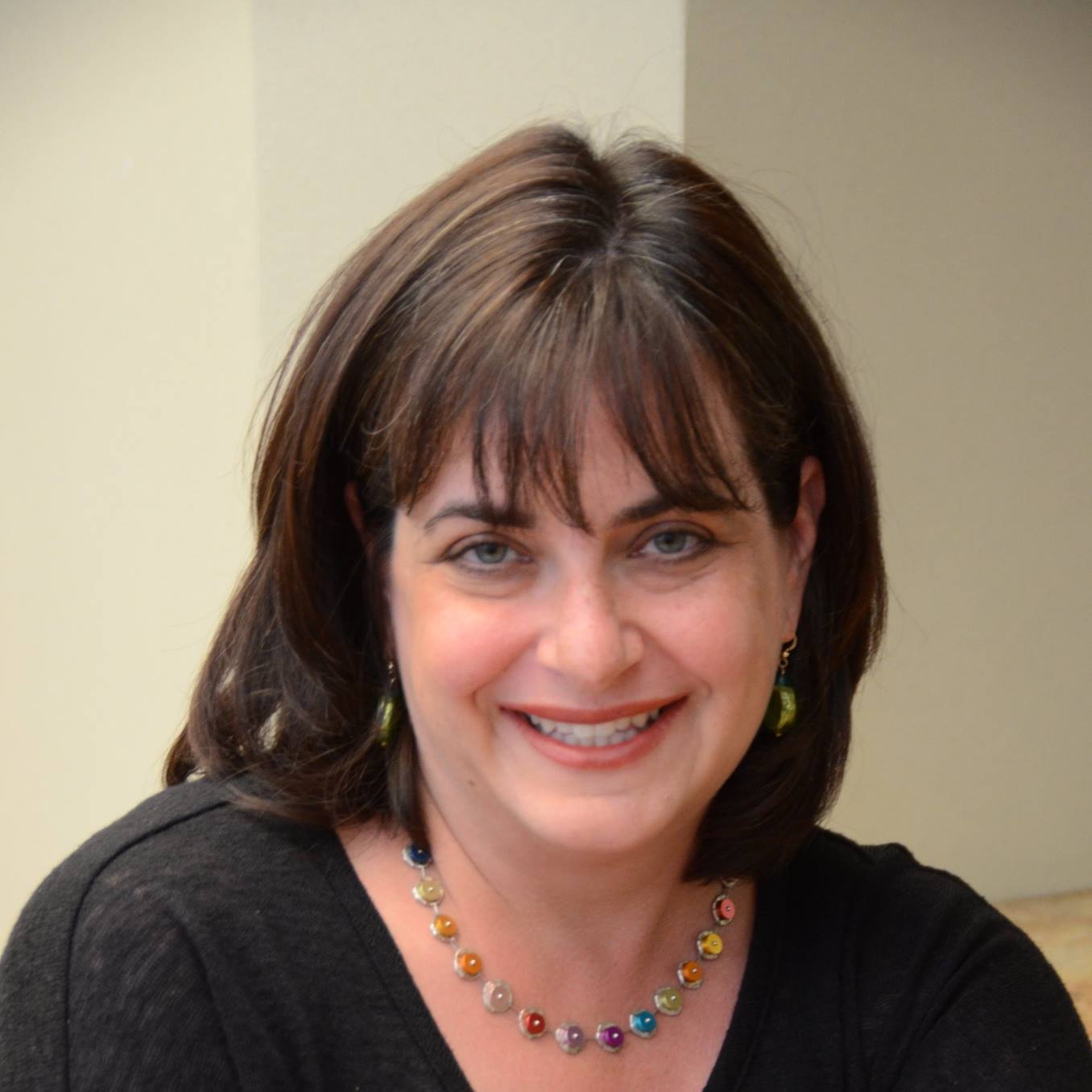Fear, Relief, Uncertainty—Liberation Through a 15-Year-Old’s Eyes

For weeks, Eva (Geiringer) Schloss and a small band of young women had been exploring the far corners of the women’s section of Auschwitz-Birkenau, alone and, for the first time in months, unwatched.
It was January 1945, and Allied forces were nearing the camp. The SS had already evacuated most of the surviving inmates by way of middle-of-the-night marches in freezing temperatures. The gas chambers and crematoria had been destroyed. The SS guards had fled.
Eva, who was 15 at the time, her mother, and a few other women who had been left behind in an infirmary were hunkered down in abandoned SS barracks. On January 27, as Eva wandered the camp searching for food, she was startled by another presence.
“I saw a huge figure standing, all covered in snow and fur. And the first minute, I thought it was a bear … And then I went a bit closer and I looked, and I saw that it was a man. I saw it was the first Russian soldier who had entered the camp,” Eva said in testimony recorded at her home in London in 1996.
Eva, her brother, and their parents had fled Vienna and hidden in Amsterdam for two years before being betrayed and sent to Auschwitz-Birkenau in May 1944. The family was separated upon arrival. Eva and her mother endured back-breaking labor, cruel punishments, and malnutrition for nine months until the arrival of the Red Army.
“Of course we were tremendously relieved, but, you know, we were not yet convinced that we'll survive, that we had really come through,” Eva said in her testimony, one of 55,000 contained in USC Shoah Foundation’s Visual History Archive.
In 2005 the United Nations General Assembly established January 27, the day that Eva spotted the strange figure standing in Auschwitz, as International Holocaust Remembrance Day.
But for Eva, the slow unrolling of liberation began weeks before the Red Army arrived and would continue for months afterward, as the war raged on. Eva’s transition to liberation was not marked by a single day, but by a process that was as uncertain as it was hopeful.
In December and January of 1945, the Germans, nearing defeat, forced 60,000 prisoners to evacuate Auschwitz on foot. Some 15,000 people died on these death marches.
Eva and her mother Fritzie were in the infirmary at the time, harbored by a cousin who was a nurse. Nearly every night, Eva and her mother were summoned for evacuation, but each time sent back by alarms set off by Allied bombings.
One night, Eva told her mother, “I’m not going out anymore. If they call again, I’ll stay.”
When Eva and Fritzie woke up the next morning, nearly all the SS and the remaining inmates in the infirmary had gone. Only about 50 stragglers remained, most of whom were near death.
Eva and a few other young people still strong enough began to explore the vicinity and succeeded in finding a food storehouse.
“There was no cooking facility or anything … so the few of us carried bread back to the people who couldn't walk around, and we gave it to them,” she said in her testimony. They also distributed blankets, clothes, and boots and found an axe to hack through an ice-encased pond to access the water below.
As people died in the hospital block, Eva and others carried the bodies outside.
“It was terrible,” Eva said. “But it was beautiful weather. I still remember this beautiful, sparkling, diamond snow and just all those bodies heaped in a corner.”
After hiding in the infirmary for many days, Eva, her mother, a Polish woman, and a French girl found more comfortable quarters in an abandoned SS barrack.
And then suddenly the Red Army arrived in waves of units, none of which stayed long. At first, the inmates were uncertain whether the Russian soldiers would treat them any better than the Germans had.
But the Red Army provided the survivors with shoes and uniforms, and fed the former inmates hearty cabbage soup from their field kitchens.
“We ate whatever we got. We never stopped eating. … Sometimes I ate practically the whole day and sat the whole night on the bucket with terrible cramps,” Eva said.
One day, a departing Russian unit left behind a dead horse. The Polish woman who lived with Eva in the barrack said she could make a stew from it. But when Eva cut into the horse, she found a womb swollen with a nearly full-term colt.
“We still cut a bit of it and made a stew and ate it. You know, when I think about that, that I did this, I just think, ‘that can't be true.’ But I know it is true,” she said.
All the while, the war raged on.
“It was not at all a complete march forward yet. It was backward and forward and shooting and airplanes and everything,” Eva said.
Knowing they were unsafe in the women’s section of their isolated barracks, Eva and her mother moved to the main camp, where hundreds of liberated prisoners and many Russian soldiers were living in buildings with proper toilets, heat and running water. In the main camp, Eva found Otto Frank, a neighbor from Amsterdam and the father of her playmate, Anne. Otto told Eva that he had seen her father and brother, Erich and Heinz Geiringer, who had been transported to Auschwitz with Eva and her mother; they had been forced to join a death march several weeks earlier.
In February 1945, Russian commanders announced that the ex-inmates would be moved to more secure territory. Under the care of the Red Army, they traveled further and further east by train and truck. Before they left Auschwitz, Eva’s mother sewed her her a rucksack out of rags, which she now used to carry belongings they traded for food in the villages they passed through.
Sometimes their Russian caretakers demanded labor of them, but for the most part Eva felt they were treated well.
“When [the Russian soldiers] finished cooking, they got out their musical instrument, a balalaika … and they sang and danced. And they tried to teach us. They were very basic and very kind and jolly,” Eva said.
Eva and the other refugees eventually landed in Odessa, where they slept on the floor of a beautiful palace.
One day, in May, the announcement came: The war had ended. The survivors, the soldiers, and the prisoners of war housed in the palace all sang and danced, and the Russians staged a grand show.
“We all sat on the floor. And there came the most magnificent costumes and singers and dancing and a big party with drink. And they made a bit buffet with food. And fireworks. It was a wonderful party.”
But there was still more heartache in store: Eva and her mother returned to Amsterdam and learned from the International Red Cross that her father and brother had died after the death march to Mauthausen, just days before the war ended.
Eva went on to finish high school in Amsterdam and then moved to London to study photography. In 1951 she married Tzvi Schloss, with whom she later had three daughters.
Eva’s mother married Otto Frank in 1953, and in the 1980s Eva began to tell her own story through her work with the Anne Frank Trust UK. In 1988, she published the first of version of After Auschwitz: A Story of Heartbreak and Survival by the Stepsister of Anne Frank (she published later version in 2015 and 2019). In 2015 she recorded an interactive biography for USC Shoah Foundation’s Dimensions in Testimony program. Now aged 92, she continues to speak to community groups and schools in the U.K and around the world.
Among her few possessions that survived the war are the rucksack sewn by her mother and a porcelain bear purchased by her father at a Vienna auction in the 1930s.
“Recently, my mother asked me what I wanted from her things, and I chose the bear,” Eva said in her 1996 testimony. “It reminds me of when we were liberated from Auschwitz. The first thing I saw was a Russian soldier covered in fur and snow. And I thought at the time it was a bear at the gates. So [this bear] is very dear to me,” Eva said.
View Eva’s full testimony here.
See a selection of clips from Eva’s testimony used in the classroom through our IWitness educational platform.
Read a behind-the-scenes account of Eva’s interview for Dimensions In Testimony.
Like this article? Get our e-newsletter.
Be the first to learn about new articles and personal stories like the one you've just read.
